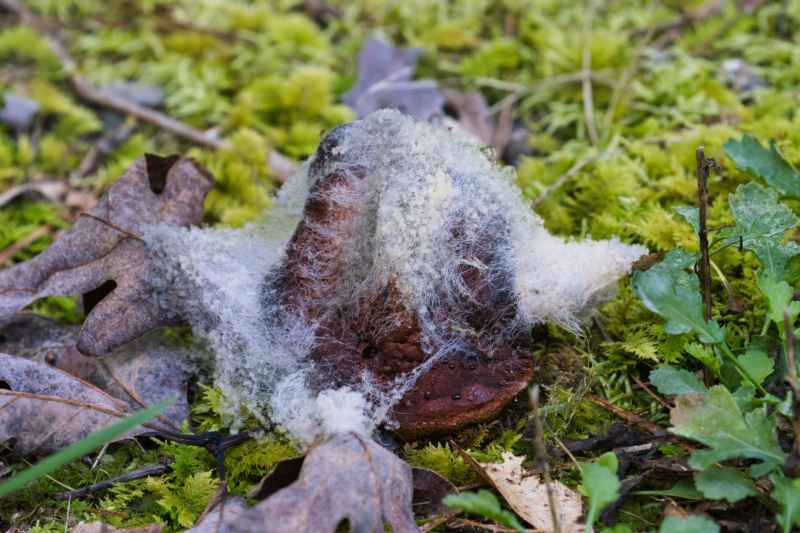During a recent wildlife photography adventure in the heart of the Ouachita National Forest in Arkansas, I came upon a fascinating yet somewhat disheartening sight—a mushroom entangled in what appeared to be spider webs. At first, I assumed it was simply the work of industrious arachnids, but a closer look revealed something far more intriguing: the mushroom was afflicted with Cobweb Disease.

The Mystery of the “Spider Webs”
When I first encountered the mushroom, I was captivated by the delicate, almost ethereal threads that covered its surface. These thin, spider-like filaments made the mushroom look like it had been wrapped up in silk, as if a spider had taken a particular interest in it. However, my curiosity got the better of me, and I decided to delve deeper.
Upon further investigation and some research, I realized that what I was seeing wasn’t the work of spiders at all. The culprit was Cobweb Disease—a type of mold that infects mushrooms and other fungi.
Understanding Cobweb Disease
Cobweb Disease is an ailment that primarily affects cultivated mushrooms but can also be found in wild ones. According to the American Mushroom Institute, this disease is caused by a mold that forms a web-like growth over the mushroom’s surface. As the infection progresses, the fruiting bodies of the mushroom turn brown and begin to rot. The mycelium of the pathogen, which is the vegetative part of the fungus, can sometimes change color, turning pink or red. What starts as a delicate, cobweb-like appearance can eventually become a dense mat of mycelium, covering the entire mushroom. In advanced stages, the casing surface may even develop a thick, powdery layer of white mycelium, marking the final stages of the mushroom’s demise.
A Close-Up Look at Nature’s Challenges
As I reviewed the images I captured during my time in the forest, I was struck by how this once vibrant mushroom had succumbed to its fate. The bright colors that had likely adorned its cap were now dulled to a lifeless brown, a clear indication of the progression of the disease. The transformation from a healthy, thriving organism to one overtaken by mold was both fascinating and a bit melancholy—a reminder of the delicate balance in nature and the many challenges that wildlife, even in its simplest forms, must navigate.
Reflections on the Encounter
This experience was a powerful reminder of the complexities of nature. Even something as seemingly mundane as a mushroom can become the center of an intricate and sometimes destructive process. While Cobweb Disease may not be as dramatic as watching a predator chase its prey, it’s a potent example of the subtle yet impactful ways that life and death play out in the natural world.
Next time you’re out exploring, keep an eye out for these less obvious but equally compelling stories. You might just find that the most fascinating discoveries are the ones you least expect.
